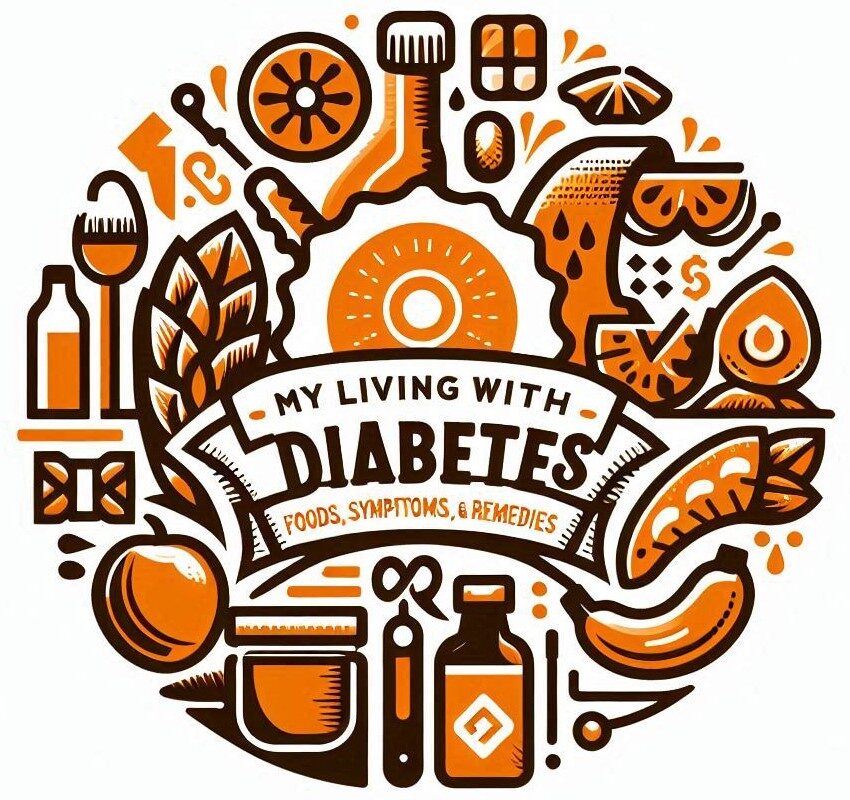Carbohydrates are a regular part of most people’s diets, but their impact on blood sugar levels can feel pretty confusing, especially if you are working on managing your health or just want to keep things balanced. Different types of carbs can lead to very different blood sugar responses, and understanding how it all fits together is a smart place to start. I am going to walk you through how carbs affect blood sugar, how to make better choices, and what kind of carb levels help support good blood sugar balance every day.

How Carbohydrates Affect Blood Sugar
Carbohydrates break down into glucose, which is the main kind of sugar our bodies use for energy. When you eat bread, pasta, rice, fruit, or even most snack foods, your body digests these carbs and turns them into glucose, raising blood sugar levels. Your pancreas steps in to release insulin, a hormone that helps move that glucose from your blood into your cells, where it gets used or stored for later.
The speed and amount of blood sugar increase depend on the kind of carbs you eat. Simple carbs, like white bread, candy, or soda, get absorbed quickly and can cause fast spikes. Complex carbs such as brown rice, beans, and oats contain more fiber and break down slower, leading to steadier, more gradual changes in blood sugar. That is why the foods you choose really matter when it comes to blood sugar balance.
Types of Carbohydrates: Simple vs. Complex
Sorting carbs into two groups—simple and complex—helps you see how they play out in your body.
- Simple Carbohydrates: These are smaller molecules, found in foods like sugar, honey, fruit juices, and white bread. They’re digested quickly, which can push your blood sugar up fast. If you keep eating lots of simple carbs, your blood sugar will rise and fall all day, which can leave you feeling tired and extra hungry.
- Complex Carbohydrates: Foods like sweet potatoes, whole grains, legumes, and most vegetables are packed with these complex carbs. Complex carbs come along with fiber, vitamins, and minerals. They take longer to digest, so they have a slower, more steady impact on blood sugar levels.
Complex carbs have another advantage—they keep you satisfied longer, which can help with appetite control. Simple carbs, in contrast, are often lacking in nutrients and can lead to that “sugar crash” feeling. For best results, try to focus on complex carbs most of the time, but remember that no single food makes or breaks your diet. Balance is key!
What Is the Glycemic Index?
The glycemic index (GI) ranks how quickly foods containing carbs raise blood sugar on a scale from 0 to 100. Lower-GI foods, such as lentils, most fruits, and whole grains, raise blood sugar slowly, while higher-GI foods like white rice, cornflakes, and potatoes give you that rapid spike.
Using the GI to pick meals is pretty handy for people who want to keep a closer eye on their blood sugar. Combining lower-GI foods with protein or healthy fats makes meals even easier on your blood sugar. The American Diabetes Association has more detailed chart info if you want to dig into this topic further. Remember, though, that GI can be affected by how food is cooked and what else you eat with it, so use it as a guide, not a strict rule.
Recommended Carbohydrate Levels for Good Blood Sugar
Trying to stay on top of blood sugar often means being aware of your daily carb intake. For most adults, the Dietary Guidelines for Americans suggest that 45% to 65% of total daily calories should come from carbohydrates. That can mean anywhere from 200 to 300 grams each day for someone eating 2,000 calories. Some people do better with less, especially if they’re trying to manage diabetes or prediabetes.
Instead of just focusing on percentages, thinking about the quality and portion size of carbs is super important. For steady blood sugar, it usually works well to spread carbs evenly across meals and snacks, aiming for:
- 45 to 60 grams of carbs per meal (for most adults)
- 15 to 30 grams of carbs per snack (if you have snacks between meals)
These numbers are just general targets—if you’re working with a healthcare provider or a dietitian, they can help you fine-tune these amounts for your needs. It’s also helpful to remember that your needs may change as your activity levels, age, or health status change. Don’t hesitate to check in with a professional if things feel confusing.
Carbohydrate Choices That Support Balanced Blood Sugar
Choosing whole, minimally processed carbs with plenty of fiber and nutrients can really help take the pressure off your blood sugar system. These options are worth checking out:
- Nonstarchy vegetables: Broccoli, spinach, peppers, and carrots have low carb counts and lots of fiber, which barely make a dent in blood sugar.
- Whole grains: Oats, barley, quinoa, and wholegrain bread provide complex carbs, fiber, and B vitamins.
- Legumes: Beans, lentils, and peas come with protein and fiber, making them super filling and gentle on blood sugar.
- Fruits (in moderation): Berries, apples, and oranges have natural sugars, but their fiber slows down how fast those sugars hit your bloodstream. Just watch your portions.
If you want a little extra variety, don’t forget about foods like pumpkin and squash—these are nonstarchy veggies that still give you some texture and color, without spiking blood sugar. Swapping white rice for brown rice or quinoa can also help even things out.
Common Challenges With Carbohydrate Intake
Even with good intentions, there are a few easy ways to accidentally eat more carbs than you realize. Here are the main things that can trip people up, along with tips that are very useful for healthy meal choices:
- Hidden sugars: Lots of processed and packaged foods, such as sauces, salad dressings, or bread, have sugar added in, so always check the nutrition labels if you can.
- Big servings: Restaurants and packaged foods often come in portion sizes much larger than you need. Measuring portions at home a few times can help you spot what a healthy serving actually looks like.
- Not balancing carbs with protein or fat: Adding a source of protein, like chicken or tofu, or healthy fats, such as avocado or nuts, can slow digestion and make meals more filling, keeping blood sugar steadier.
Easy Ways to Stick to Balanced Carb Intake
- Start meals with vegetables and protein so you feel satisfied and eat fewer high-carb foods.
- Try meal prepping simple wholegrain bowls or soups to keep quick processed carbs off the regular menu.
- If you have a sweet tooth, reach for a piece of fruit or pair a smaller treat with nuts to slow sugar absorption.
- Tracking your food for a few days in an app can be a real eye-opener and helps you see where most of your carbs are coming from. You don’t have to count every bite forever—but an occasional check-in can be really helpful.
Another helpful trick is to swap sugar-heavy breakfast cereals for a bowl of oatmeal with chopped fruit and nuts, which gives you a good blend of fiber and satisfying nutrients. Or, if you’re eating pasta, mix in extra veggies and lean protein to stretch the meal and keep your portions reasonable.
Frequently Asked Questions
Here are some common questions when it comes to carbs and blood sugar:
Question: What happens if I eat too many carbs in one meal?
Answer: Eating a large portion of carbs in one meal can lead to a quick and high spike in blood sugar. Your body will need to release more insulin, and if this happens often, it may get harder to manage blood sugar effectively over time. Spreading carbs throughout the day prevents sudden jumps and dips in energy.
Question: Are all carbs bad for blood sugar?
Answer: No, definitely not. Carbs are your body’s primary fuel source. Whole, fiber-rich carbs (like vegetables, beans, wholegrains, and fruits) are really important for energy, digestion, and keeping blood sugar steady. It is the refined, sugary carbs that tend to throw things off balance.
Question: Is a low-carb diet necessary for everyone with blood sugar issues?
Answer: Not always. Some people feel better on a moderate or slightly reduced carb intake, while others need to go lower, especially with certain health conditions. The trick is to choose the type and timing of carbs that help you feel steady and energized, and to work with a professional if you have questions about specific needs. Remember, gradual changes win the race.
Final Thoughts On Managing Carbohydrate Levels for Healthy Blood Sugar
Keeping carbohydrates at steady, moderate levels is a really solid strategy for supporting good blood sugar. Choosing complex, minimally processed carbs, and spreading them out over the day, can make a big difference in how you feel. Paying attention to portion sizes, adding fiber, and balancing meals with protein and healthy fats can go a long way toward healthy blood sugar; whether you are managing diabetes or just hoping to avoid energy crashes.
If you want extra help figuring out your own healthy carb levels, a registered dietitian can give you advice that fits your lifestyle. Carb management is not about cutting out all the foods you love. It is about making smart swaps, watching portion sizes, and building solid habits so you can feel great every day. Stumbling upon the right balance takes a bit of time, but once you get the hang of it, your energy and mood will thank you.

The relationship between carbohydrates and blood sugar levels is especially important for individuals with epilepsy, as fluctuations in blood sugar can potentially trigger seizures. Doctors and family members have always been on my case regarding carbs and sugars; it kinda becomes annoying. But I get it. 14 years ago, they tried the ketogenic diel on me(before it became a thing) due to sugar levels.
Thank you for the Comment, Linda. Yes, fluctuations in blood sugar levels can potentially bring on seizures. Did the ketogenic diet work for you? Thanks again for your Comment.
Best wishes,
Kent
As a former medical technologist, I appreciate how clearly you explained the role of carbohydrates in blood sugar management. Many patients don’t realize how much simple carbs can spike glucose levels, especially when not balanced with fiber or protein.
I also like that you mentioned the glycemic index—this is something we often saw misunderstood in practice. Great job breaking it down in a way that’s easy to follow
Thank you for your Comments, Alice. First of all, I would like to say I appreciate the field you were in as a medical technologist. Yes, it is amazing how so many people even take for granted the impact of carbs on one’s glucose levels. Once again, thank you for your Comments.
Best wishes,
Kent